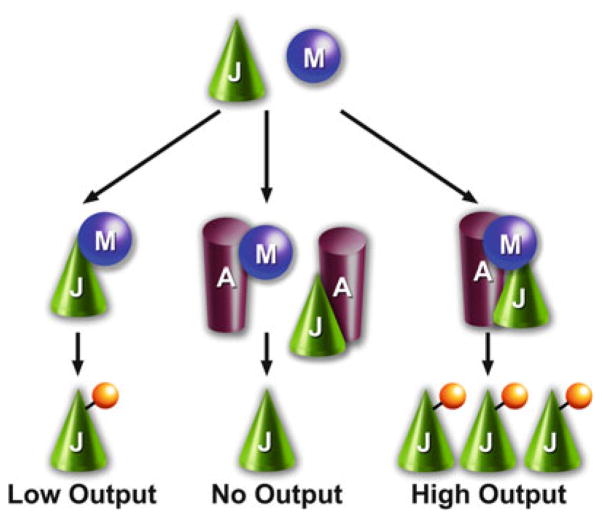Fig. 2.
Scaffold concentration matters. Signaling can occur in the absence of scaffolds (the formation of JM complex; low output) and optimum scaffold concentrations promote the formation of complete complexes (JAM), thereby facilitating signaling (high output), whereas supraoptimal levels of scaffold make the formation of incomplete complexes (JA and AM) more likely, suppressing signaling in the cascade (no output). Biphasic effect of scaffold concentration on signaling was predicted by mathematical modeling (Levchenko et al. 2000, 2004) and experimentally demonstrated in case of arrestin-3 scaffolding of signaling modules that activate JNK family kinases (Zhan et al. 2011b, 2013; Kook et al. 2013). A, arrestin-3; M, MKK4/7; J, JNK1/2/3

